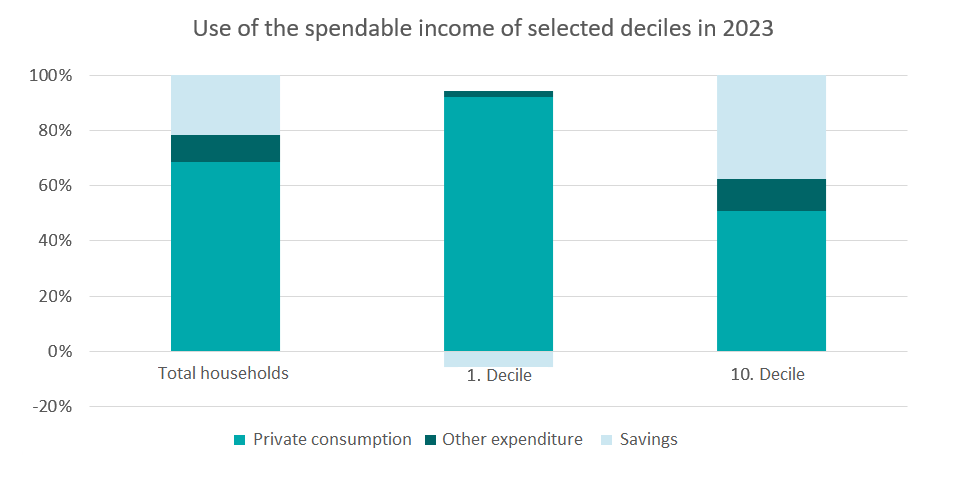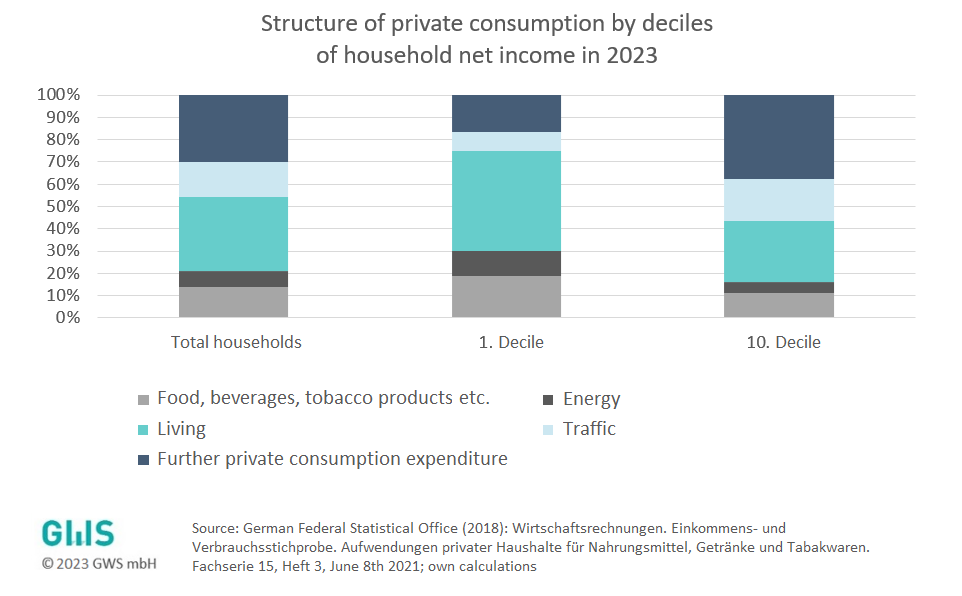Expenditures for energy and food place a particularly heavy burden on lower incomes
The inflation rate in Germany remains at a high level even after more than a year of war in Ukraine. Although the consumer price index has now weakened for the second month in a row, it remains significantly elevated and places a particularly heavy burden on low-income households.[1] The reason for this "unsocial inflation" is illustrated by the following two graphs.
In both figures, the left bar describes the development of Germany's households on average. The middle bar reflects the situation of the lowest decile by household net income, while the right bar describes the top - i.e. the wealthiest - decile. Already in the upper representation, the disproportionately high importance of private consumption for the lowest decile stands out in the comparison of the bars. Here, more than 90% of income is used for private consumption, i.e. for food, housing, energy, transport and other expenditure. It is also interesting to note the negative savings of the people in the lowest decile. They spend more than they earn and have no opportunity to save.


To take account of the importance of private consumption, the second chart fans out private consumption in detail. The cost drivers quickly stand out. Besides the large expenditure block "housing", food and energy account for about twice as much of private consumption in the first decile as in the top decile. These two expenditure categories have recently been particularly dynamic cost drivers and are therefore currently a burden especially in lower income classes.
At the current margin, the first price reductions can now be observed in the area of energy and food. The first basic energy suppliers are already lowering their tariffs, but retailers are also beginning to pass on the first price reductions to customers[2][3]. These price reductions are likely to ease the burden on lower incomes in particular. Whether the lower decile will ultimately be able to cover their expenses remains to be seen and depends not least on possible adjustments on the revenue side.
Other figures can be found here.
[1] Statistisches Bundesamt (2023): KORREKTUR: Inflationsrate im April 2023 bei +7,2. Pressemitteilung Nr. 179 vom 10. Mai 2023. https://www.destatis.de/DE/Presse/Pressemitteilungen/2023/05/PD23_179_611.html
[2] Süddeutsche Zeitung (22.05.2023): Die Preise für Strom und Gas sinken wieder. https://www.sueddeutsche.de/wirtschaft/energiepreise-gas-strompreis-grundversorgung-1.5872348?reduced=true
[3] Handelsblatt (25.05.2023): LIDL-CHEF„Verbraucher schauen nicht mehr nur auf den niedrigsten Preis“. https://www.handelsblatt.com/unternehmen/handel-konsumgueter/lidl-chef-verbraucher-schauen-nicht-mehr-nur-auf-den-niedrigsten-preis-/29163020.html

